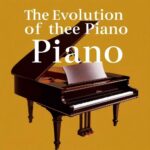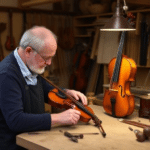African Music Rhythmic Heartbeat: Exploring the Significance of Percussion
Close your eyes. Imagine the vibrant pulse of drums, the shakers’ gentle sway, and the xylophone’s joyful chime. That’s African music! Percussion is more than just rhythm in Africa. It’s a language, a history book, and the soul of many cultures. It unites the continent’s diverse sounds. Percussion holds profound cultural, historical, and social importance in African musical forms.
The Historical Roots of Percussion in Africa
Percussion instruments are very old on the continent. They go all the way back to ancient times. The beats have echoed through generations. These ancient civilizations used rhythm to express their lives.
Early Percussion Instruments and Their Uses
Early Africans made drums from hollowed logs and animal skins. They crafted rattles from gourds and seeds. Shakers emerged through woven baskets. These instruments weren’t just for music. They played key roles in rituals, ceremonies, and even communication. Think of the djembe drum in West Africa. It shared news and summoned people to events!
The Spread and Evolution of Percussion Across the Continent
Percussion traditions didn’t stay in one spot. They traveled and evolved across the whole continent. Each region made its own unique style. For instance, West African drumming is energetic and complex. Meanwhile, Southern African styles often feature layered rhythms. These diverse styles show Africa’s rich cultural range.
Cultural and Social Significance of Percussion
Percussion does so much in African societies. It appears everywhere! Its cultural significance is huge.
Percussion in Rituals and Ceremonies
Drums mark special moments. Percussion beats often lead religious ceremonies. They are important for rites of passage as well. Plus, percussion can be used for healing rituals. Consider Vodou ceremonies, which use drumming to connect with spirits. Rhythm heals!
Percussion as a Form of Communication and Storytelling
Instruments speak! Percussion sends key messages in some areas. It keeps old stories alive and tells new tales. The “talking drum” does a unique job. Experts can play it to copy the sound of human speech. It relays complex messages across distances. Percussion helps connect people, old and young.
Percussion in Social Gatherings and Celebrations
From weddings to festivals, drums are central to African gatherings. They create community, joy, and togetherness. A wedding wouldn’t be the same without those drums! Percussion brings everyone together.
The Diverse Instruments of African Percussion
The variety of percussion in Africa is amazing. You’ll find instruments of all shapes and sizes. Each creates its own unique sounds.
Membranophones: The World of Drums
Drums, called membranophones, are everywhere in African music. The djembe is goblet-shaped. The talking drum can mimic speech. The ngoma is large and resonant. They each require different skills to play!
Idiophones: Rattles, Bells, and More
Idiophones make sound from their own bodies. Rattles, bells, and xylophones fall into this group. The balafon is a wooden xylophone. The mbira, or thumb piano, vibrates metal tines. The shekere is a beaded gourd. Each adds a unique texture.
Other Percussion Instruments: Log Drums and Beyond
Log drums also exist. These hollowed logs create deep, resonant sounds. Each region features special and important percussion instruments. Every instrument adds a unique element.
The Influence of African Percussion on Global Music
African rhythms didn’t stay in Africa. They spread across the world and had a massive impact. You see it everywhere!
African Rhythms in the Diaspora
The transatlantic slave trade took African culture to the Americas. Slaves carried musical traditions with them. This gave birth to new styles. Afro-Cuban music and Brazilian Samba are great examples. African roots run deep.
The Impact on Contemporary Music Genres
Modern music owes much to African percussion. Jazz, blues, and hip-hop all have clear African elements. The beat lives on! Even modern pop borrows from African rhythms.
Preserving and Promoting African Percussion Traditions
People work hard to keep these traditions alive. It is important to preserve them. This is done through music education and modern adaptations.
Music Education and Cultural Preservation
Young people need to learn these old rhythms. Music schools now teach traditional drumming. This helps keep the culture alive for a long time. These skills pass from elders to youth.
Modern Adaptations and Innovations
African musicians now mix old and new. They add traditional percussion to new music styles. This creates fresh and exciting sounds. It keeps the traditions alive in the modern age.
Conclusion
Percussion is so important. It is the core of African music. It echoes through history. It touches cultures worldwide. African rhythms have had a lasting influence. Now, go explore African percussion music! You will find a world of amazing sounds and stories.
For more tips on percussion instruments and to explore our premium cajon collection, visit Gappu.tv and join the rhythm revolution!


